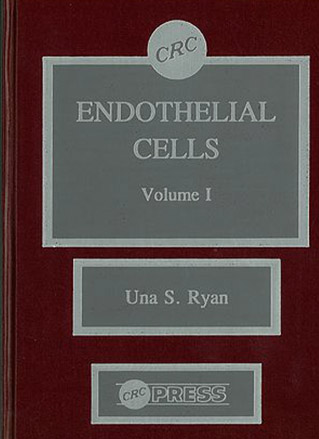UNA RYAN
Do Something Useful
I was born at a very inopportune time, at the very end of 1941 just after Pearl Harbor had fallen. I was born in an air raid shelter under Bungsar Hospital in Kuala Lumpur. Then, one night in February 1942, my mother was told to get up and get out of bed, we’ve got to flee.
My father was a rubber planter. He got us to the docks in Singapore, and since my father’s family was English, there really wasn’t any choice. We were going to go to England. And he managed to get my mother and me on the last ship to leave Singapore harbor before Singapore fell.
She had been told by my father, “Go to Mary!” Mary was his older sister who lived in Oxford. My first memory is arriving at my aunt’s house. I remember my black patent leather shoes on a worn old carpet, which I later found out was some ancient, very special Persian rug.
England had been bombed, and I remember having to take care. People were very frightened because of the Blitz. So from a very early age I realized that I hadn’t died. And then when I was five, I was taken out of school to go and meet my father at the railroad station. I ran right up to him, recognized him at once. Of all the men who got off the train I knew exactly who he was. But I, too, had a great sense that he had come back from the dead, so to speak.
My parents stayed in the U.K. while father was recuperating. He’d lost everything in the war. So he went back to rubber planting in Malaysia and my mother went with him. I was probably about six by then and they thought it was much safer for me in Oxford, because after WWII it was the Malayan Emergency years—the Communist insurgence. I stayed with Aunt Mary and my uncle the vicar.
I had a wonderful childhood, but it was in fact deprived because of the food rationing and restrictions of the war in England. So I’ve always had this view that if you don’t die, you might as well do something useful with your life. I was very clear on that.
This feeling never really left me. I remember thinking, now this was the 1950s, that I regretted there were no more places to discover geographically, and so I would have to discover things about medicine and the body. When I said I wanted to do something that mattered, even then I thought of it in terms of medicine and disease.
I’d go to Malaysia for summer vacations, but my parents didn’t think it was safe for me to stay there. A lot of Colonials, white people, were being shot. My father was safe however, because he had a Chinese wife and was very respected and well known.
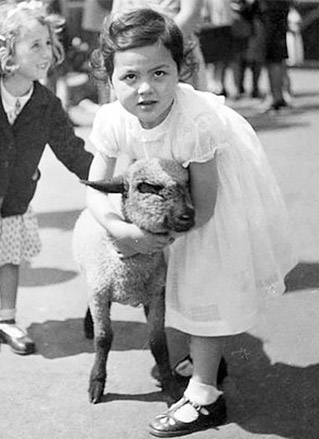
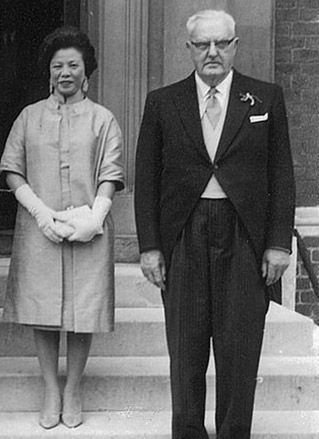
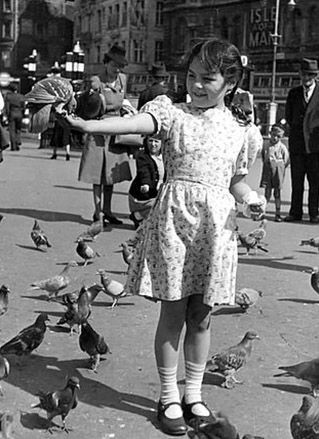
Questioning Things
Around this period I was at school in Oxford; I was unusual looking and teased for looking different. I had to learn how to stand up for myself. I didn’t fight, but I would set up games and competitions, and I would make sure we girls could beat the boys — we were very little, and very athletic back then, but still got cuts and bruises.
And I remember thinking early on about how our blood clots everywhere; you’d see it on the ground and on the grass and on your dress and on your skin. Why am I not a solid lump inside? If blood clots on the outside, why does it stay liquid inside us? What is special about the inside of a blood vessel? And I would swing on my swing and ask myself: “What if I had died in the war? What would it be like here if I wasn’t here?”
I was always questioning things then, and always not getting decent answers about science. Nobody could answer any of the very interesting questions I would have. And so I had to put a lot of these questions on hold for 15 or 20 years until I got to college and could do the research.
Messages from a Walking Stick
In my early college years, I had to compete academically so I didn’t get to work on my ideas until my third year of undergrad school at Bristol, when we were allowed to pick research projects in natural sciences. This is when it all got going for me.
Those were important years. And rather than going straight on to medicine, I was so fascinated with research that I went for a research career and got a research fellowship at Cambridge. And really never looked back.
I began working on a fascinating project with the insect called the walking stick. It turns dark at night and light in the daytime; it’s really a story about camouflage. I was interested in how did it know when it was night and when it was day. So I researched the neurosecretory cells at the front of the insect that controlled it, and that is the basis for some of my images in this series — the one titled Messages features neurosecretory cells.
It’s all very well to store messages, but you’ve got to send a message into the bloodstream, or to the organ that is going to change color. And I was able to discover a very fascinating thing — that these little packets of neurotransmitters fuse with the cell membrane and make a u-shaped or horseshoe-shaped image in a process called exocytosis.
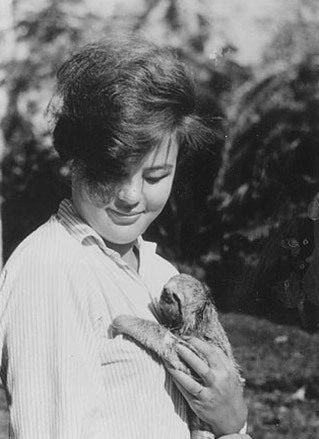
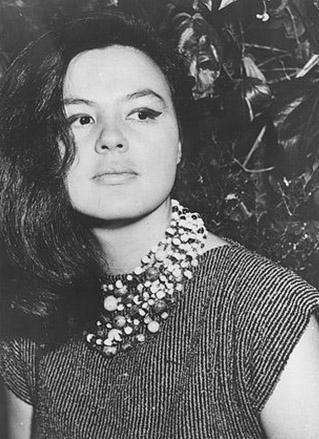
A Miraculous Time
During this time when I was a student, there was an issue of Scientific American dedicated to “The Living Cell” — it would have come out in the fall of 1961. Electron microscopy was a new, amazing thing; rather than look down an ordinary light microscope, now you could now see into cells at great magnification. It was hugely important. And it just fascinated me, because it showed the fine structure of intracellular organelles within the cells.
In order to do all this cell research, I had to learn this new technology called electron microscopy. At Cambridge, I believe we had the first ever and maybe the only privately owned electron microscope, owned by Lord Rothschild, who was an alumnus and donated his personal microscope. By the time I got there, I however preferred to use a new one from Philips.
I became very fascinated with the technology and its potential. That was how I met my first husband, because he was a few years ahead of me at Cambridge and a very good electron microscopist and I could learn from him. And he was the reason that I came to the States.
We got married in Cambridge and my husband was assistant professor at the University of Virginia at Charlottesville. So I had to find the American equivalent of the walking stick insect and I had to find the right hedges it grows on … you see, I hadn’t gotten my Ph.D. yet.
On Dragonfly Wings
I finished my thesis work but I had to go back to Cambridge to do my live interview for my thesis defense, they call it your Viva. Cambridge of course did not pay my way to go back, so I had to find a way to show up on a certain date. A friend who’d been in Hollywood was fascinated with my electron micrographs, and wanted me to model some type of outfit based on the images at a fashion show.
I picked the micrograph image that I thought could work; it was not quite what I’m doing now where I use the true, exact picture from the electron micrograph — they did a representative block print of dragonfly flight muscles that looked a bit like flowers the way they were sectioned. I chose the silk it would be printed on, and I approved the design. But more importantly it paid my way to Cambridge for my Viva—and along the way, Spain and Majorca for fashion shows.
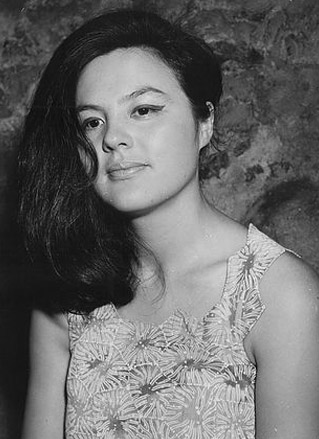
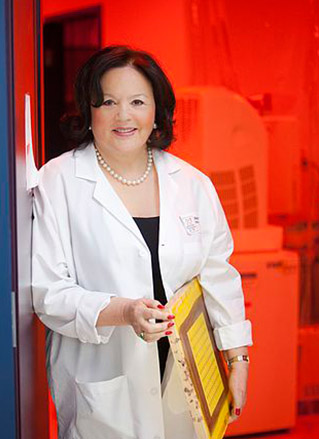
Smitten With Cells
I began my career at a wonderful time in American medicine and biomedical science. Because up until then we had a Heart Institute at the NIH — but I was lucky enough to be doing this work when we now had a Heart and Lung Institute formed at the NIH. And later we had a Heart, Lung and Blood Institute—NHLBI. And I became a very well known researcher funded by the NHLBI, the National Heart, Lung and Blood Institute. I became quite prominent and eventually chaired the NIH research committee that awarded grants in that area.
It was an incredibly exciting time. I was a Howard Hughes Investigator, in Miami. I was working on a number or projects, including the lungs; one of the things that fascinated me about the lungs went back to this old question I had as a five year old: “What’s so special about the inside of blood vessels?”
I was absolutely smitten with what cells could do, but I didn’t personally have any of the various tragedies associated with disease. Soon I was expecting a second child, whom I lost to infantile respiratory distress syndrome, meaning that some of the cells in the lungs are not mature enough. So the baby is born but the lungs aren’t able to work correctly; they don’t have this surfactant substance to keep the lungs from collapsing. So that was a huge impetus for me to study the lungs.
During my time as a Howard Hughes Investigator, I became very fascinated with the control of blood pressure on this surface. My lab became a real powerhouse for culture on endothelial cells. The endothelium is the thin layer of cells that lines the interior surface of blood vessels and lymphatic vessels. Vascular endothelial cells line the entire circulatory system from the heart to the smallest capillaries.
The Power of Research
We moved from “Una with one electron microscope” to a well-funded lab of 20 people, interacting with other scientists and professors around the world.
In the Intimate Terrain series, the image I call No Distress reveals the importance of what are called Type II alveolar cells. Type I cells comprise the very thin boundary between the air and blood. This is the surface across which oxygen is transported to get to the blood. Type ll cells are big fat cells that produce surfactant and protect the lungs from collapse. If they are not properly developed, babies die.
Once I and others began to publish on endothelial cells, people realized what an interesting cell type it is and that it’s amenable to study, so many people then wanted to work on it. Noble prizes have been won on endothelial relaxing factor —a substance here that causes blood vessels to relax again after they’ve contracted.
Studying and visualizing endothelium led to the development of ACE (Angiotensin Converting Enzyme) inhibitors. I was the first person who localized ACE on the surface of endothelial cells. And I now take an ACE inhibitor! This shows the power of research, that within one lifetime and through the concerted efforts of a whole group of people in academia and industry, a therapy emerges that millions of people across the world can benefit from.
